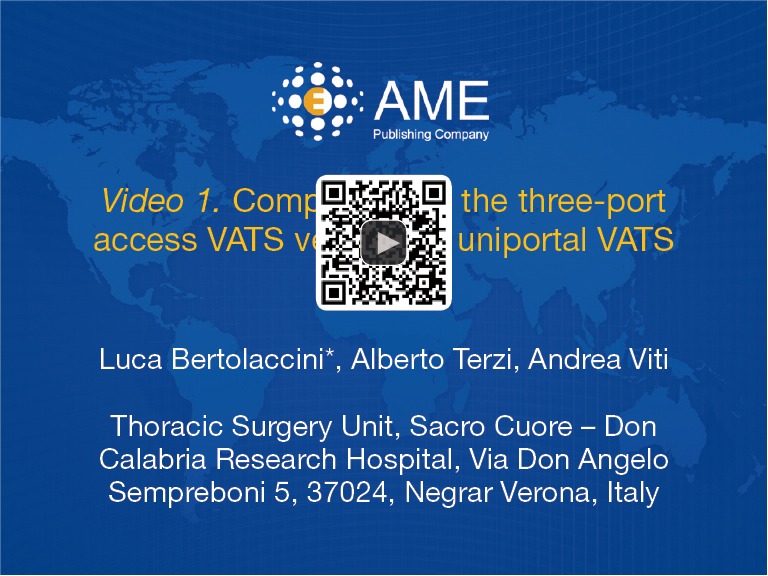Figure 1.

Comparison of the three-port access VATS versus the uniportal VATS access (11). The advantages of uniportal VATS technique could be related on a completely different geometric concept compared with conventional three port VATS. In the three-port access VATS (Figure 2) the posterior port (D) is translated along the viewing axis and the surgeon is too far to comfortably effect the instrumentation there. The camera port (A) was brought more anterior to the anterior axillary line (A'). The posterior port (D) was placed further caudally (D'). The utility port position (C) remains unchanged. Therefore, the three-port approach, in which the trapezoid configuration allows maximal convergence of operative instruments from each side of target lesion, produces an interference with the optical source. The Uniportal approach requires the translation of the thoracoscope instruments 90° along a sagittal plane passing from point C, bringing the operative instruments to address the target lesion from a vertical, caudo-cranial perspective (Figure 3). In fact, the approach to the target lesion in the lung is substantially similar to the approach that the surgeon would use in open surgery. A pure geometric explanation of the potential advantage of uniportal VATS compared with conventional three port access VATS lies in the projective plane of the sagittal approach to the target lesion, which preserves the depth of intraoperative visualization provided by the currently available two-dimensional flat video monitors. Conversely, the torsion plane created along the trapezoid space obtained with conventional VATS using the laterolateral approach gives a distinct visualization of the perspective, deep operative field. VATS, video assisted thoracic surgery. Available online: http://www.asvide.com/articles/833
